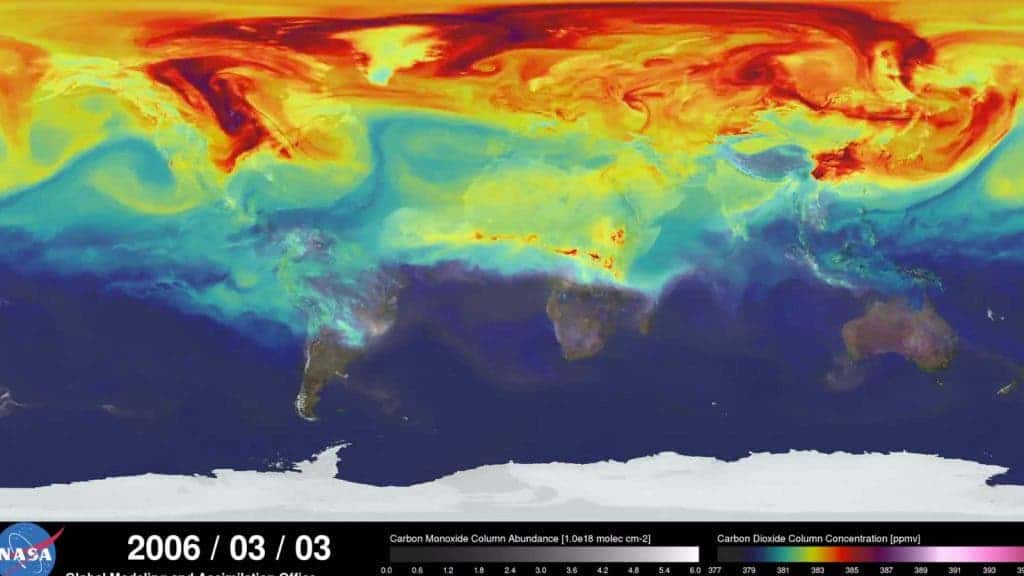NASA released a video that helps us visualize where the major CO2 emission hotspots are and how the greenhouse gas travels and swirls around the globe, guided by weather patterns. The CO2 emissions were mapped using data gathered during May 2005 to June 2007 with 64 times the resolution of a standard climate model, on a NASA supercomputer at Goddard Space Center in Maryland which took 75 days to complete.
‘Tis the CO2 season

The video doesn’t tell us anything new, but it definitely helps us better understand how CO2 is transported across the atmosphere and how the planet’s carbon sinks (forests and oceans) absorb the greenhouse gas. Much of the CO2 is released in the Northern Hemisphere, but it doesn’t stay there for long. Winds quickly swirl and shift the CO2 away from its source across oceans and large bodies of land. For me, the most revealing part of the simulation is the CO2 absorption shift with the seasons. As spring makes way for summer, the plumes start to fade away as vegetation gobbles them in photosynthesis. Once winter, when trees lose their vegetation, CO2 returns to the highlight.
“While the presence of carbon dioxide has dramatic global consequences, it’s fascinating to see how local emission sources and weather systems produce gradients of its concentration on a very regional scale,” said Bill Putman, the lead scientist on the new project, in a news release. “Simulations like this, combined with data from observations, will help improve our understanding of both human emissions of carbon dioxide and natural fluxes across the globe.”
Every year, some 36 billion metric tons of carbon dioxide are dumped into the atmosphere from both man-made activity (coal plants, cars etc.) and natural events (eruptions, wildfires etc.). Forests and oceans do a great job at absorbing much of the CO2 from the atmosphere, but there’s only so much they can handle. As such, each year excess CO2 stays in the atmosphere where it locks incoming heat from the sun and warms the planet. Last year was the first time in million of years that CO2 levels reached 400 parts per million (ppm). Scientists believe that once 450 ppm is reached, an irreversible chain of events might be set in motion that will lead to a global temperature rise of at 4 degrees Celsius by 2100. This would be followed by cataclysmic events like widespread droughts, hurricanes, global sea level rise and wildfires.
Simulations such as “Nature Run,” released now by NASA and open to the public, will further help us understand the mechanisms behind CO2 transport and absorption. The best picture will be painted by NASA’s Orbiting Carbon Observatory-2 (OCO-2) satellite which was launched this year, in July, and is set to come live in early 2015. The satellite will measure and map CO2 emissions in real time across the globe.
“We’re very excited to share this revolutionary dataset with the modeling and data assimilation community,” said Putman. “And we hope the comprehensiveness of this product and its groundbreaking resolution will provide a platform for research and discovery throughout the Earth science community.”


